by Mike Gulett –
I pointed out to a friend one time that the interior of his original 1960s Ferrari was “dirty” and he replied that it was “patina”.
We were joking around but it started me thinking about what is good patina and when does the patina indicate that the car should be restored?
The definition of patina from the Merriam-Webster Dictionary:
Patina |pəˈtēnə|, noun
1 a : a usually green film formed naturally on copper and bronze by long exposure or artificially (as by acids) and often valued aesthetically for its color
1 b : a surface appearance of something grown beautiful especially with age or use
2: an appearance or aura that is derived from association, habit, or established character
3: a superficial covering or exterior
The Hudson Hornet interior below is all original and it looks wonderful.
This car is also pictured at the top, the paint is not original. At some point the owner decided that the paint and some of the chrome needed to be replaced but he did not touch the interior which to me looked good and nearly new. He made a choice to keep the original patina of the interior but to replace the patina of the exterior, which is almost always the first to need replacing because of the exposure to the elements.
This Iso Grifo below certainly has an interesting patina and not much paint left.
GT Motorcar were the US East Coast Iso Grifo importer in the 1960s. Their sticker is still on this Iso Grifo, so it seems very likely that this car has its original paint.
Is this original paint, and the patina, worth keeping? It certainly would be nice to save that sticker but do we want to save that bad “paint”?
Below is the 40+ year old interior of my former 1966 Bizzarrini GT 5300. It does not look that old but it is different than cars that have been recently fully restored with the goal of winning a Concours d’Elegance.
Ken Phillips, the original owner of this Bizzarrini, told me that Paul Newman once sat in this car – so Paul Newman has touched parts of this interior with his hands and sat on the seat – this very leather! Now, that is some good patina worth saving.
1953 Jaguar XK120 Drophead Coupe
Selling dirt as patina did not work for this very dirty Jaguar at the Bonhams auction in Carmel, CA in August 2014. It sold for $42,900 US including premium.
It had sold at the Auctions America Auburn Spring auction not long before for $45,100 US.
The seller at the Bonhams auction lost money. This Jaguar was transported many miles from the last auction to the Bonhams auction and almost all of the dirt survived the trip.
This is the ugly part where the auction company and the seller are attempting to sell the dirt as an important part of the value of this Jaguar.
This dirt as patina sales strategy will continue as long as there are buyers who fall into the trap. At least for this dirty Jaguar there were no buyers who thought the dirt was really very valuable.
Dirt is not patina and rust is not desirable patina on a car. So why do so many experts go crazy when they find a ‘barn find’ that has dirt and rust and paint that is falling off and they don’t want to even clean the car?
In the book The Stewardship of Historically Important Automobiles by The Simeone Automotive Foundation on page 101 Dr. Fred A. Simeone writes,
Dirt is not patination. Dirt is something that was not added by the creator, or intentionally by the subsequent owners. Unlike patina, which can be the result of exposure to the elements or ordinary time-related chemical change, dirt is added to the object by an unfavorable environment or simply poor care. Similarly, under certain circumstances, corrosion can destroy the “meaning” of the automobile, thereby representing not a mellowing aging process, but a threat to the integrity of the surrounding metal.
The late Dr. Simeone knew what he was talking about.
Let us know what you think in the Comments but first read my comic below.
The Sunday Funny Pages – No. 2 – Patina as an Investment
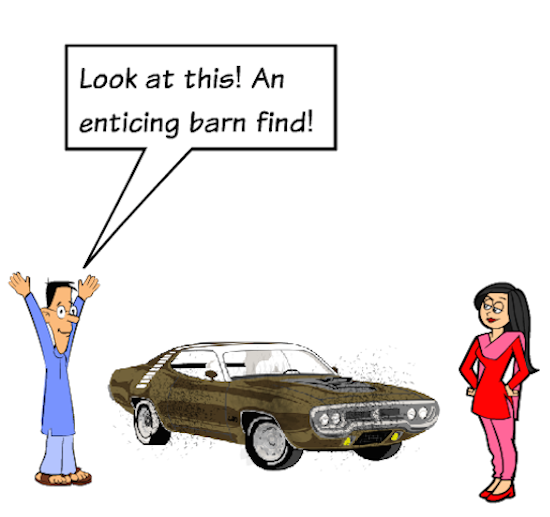
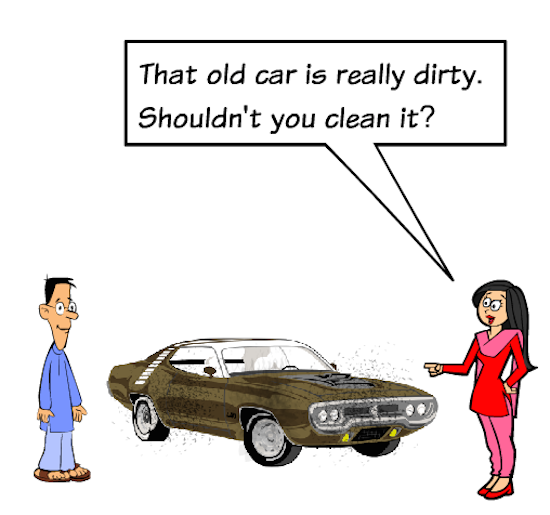
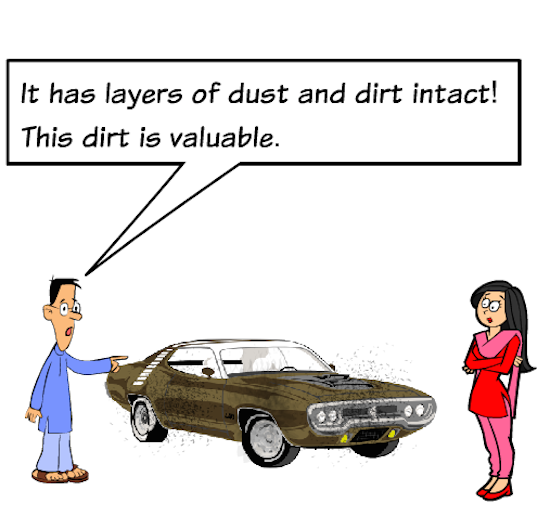
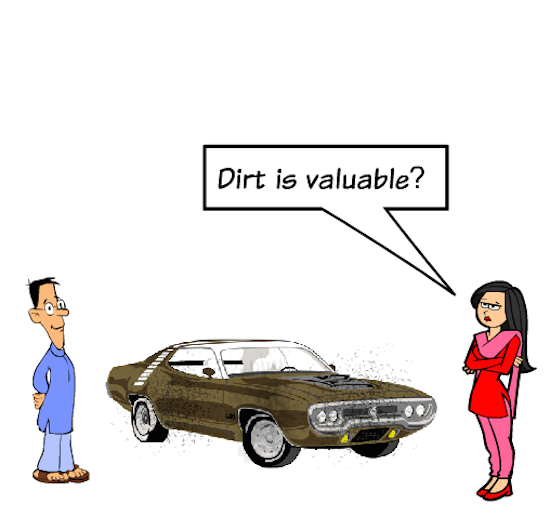
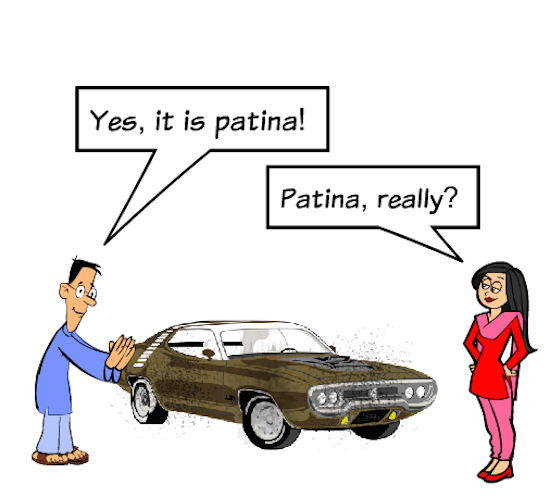
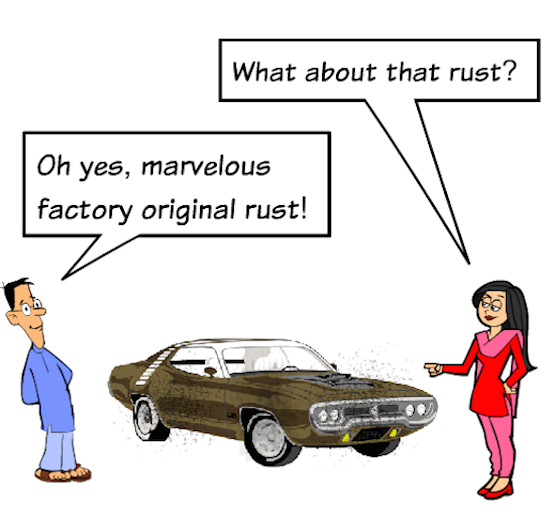
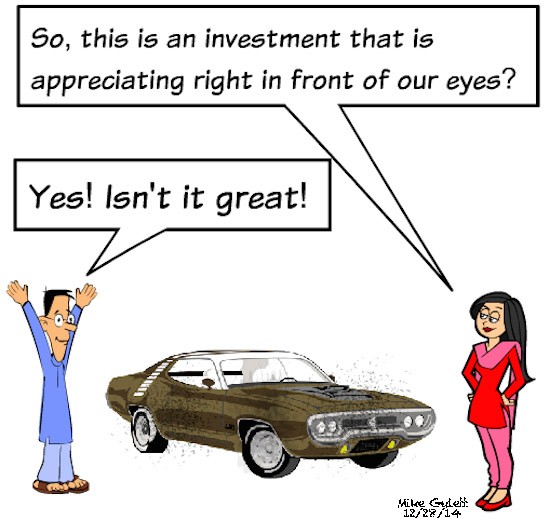

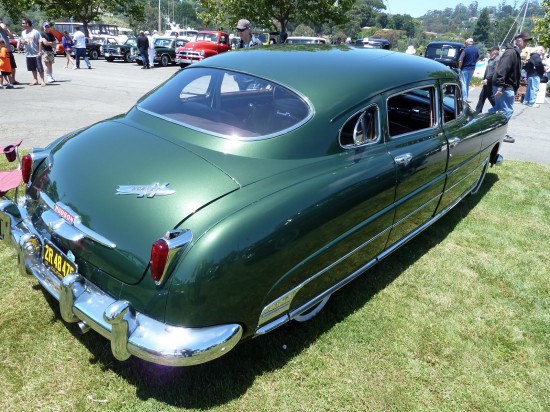
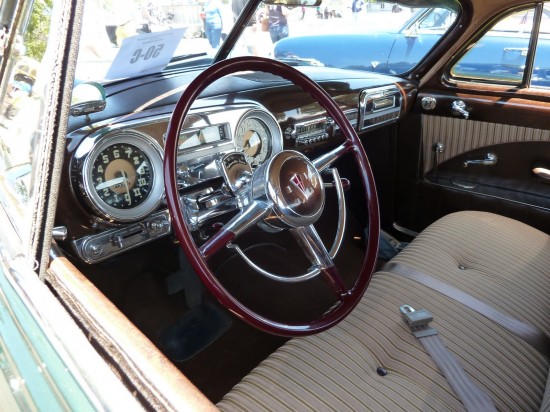
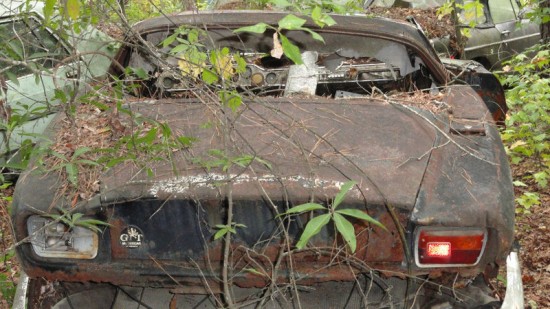
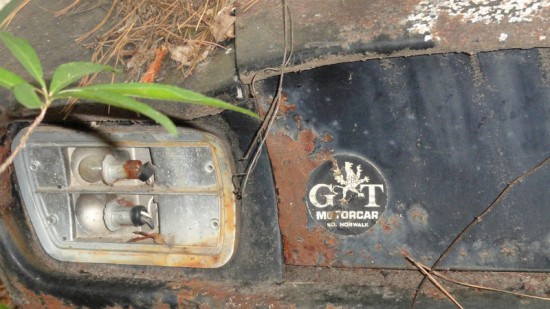
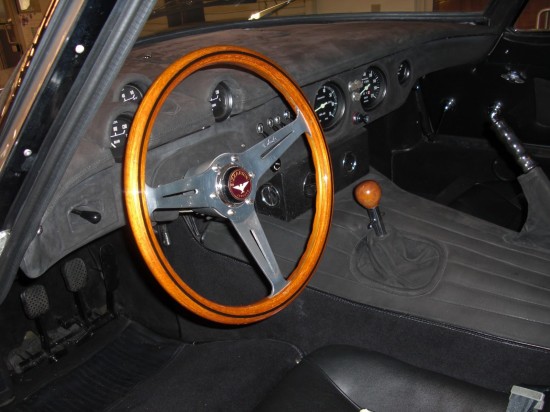
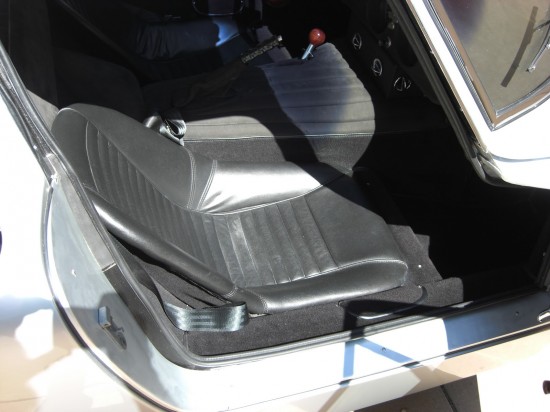
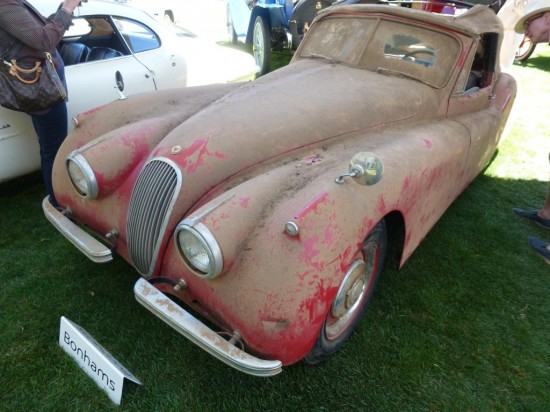
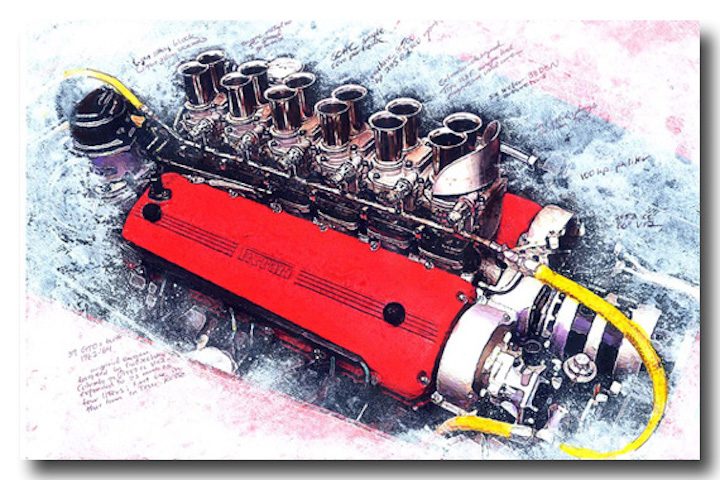

Mike,
Have you ever seen fire damage considered as patina? I have. I was attending the annual Greenwich (Connecticut) Concours d’Elegance about 15 years ago and they had a Jaguar Drop Head Coupe displayed for sale, similar to the red one covered with dirt that you show above. I believe they wanted $68,000 for it. The only issue was the car was a complete fire-damaged wreck from the body to the interior, with was was left of the burnt out seats showing their springs . Ever once in a while, over the years since, I have seen this same wreck repeatedly go to auction again and again for sale online, even as recently as two weeks ago. I wouldn’t pay $100 for this burnt out skeleton, as it would take probably $200,000 to restore that car that will never be worth more than $80,000, even if restored to full concours standards.
I believe this patina fad is finally dying out. For those who partake of this foolishness, all I can do is quote P.T. Barnum: “I have never lost money underestimating the intelligence of the American public.”
Glenn in Brooklyn, NY.
Glenn, your point seems to me THE point. I’ve been in the real estate appraisal business for 35 years. Many times a house gets to the point where the condition is so bad, no matter what, it isn’t worth restoring the house. Smart builders and developers know this and they tear down the house and rebuild the lot to something more economically feasible. All materials that are used frequently will have a normal physical (and economic) lifespan. after that, they go to the scrapyard. This is normal.
This MB 500K CB car was originally delivered to England with right-hand drive. After the war, a US GI took it home, drove it for a few years, then parked it outside in Arizona for three decades. Later, the car somehow ended up at Sam’s Junk Yard in New York, where the Fuchs Bugatti Royal also had survived. I bought the car from this junk dealer in 1987, had it airfreighted to Germany, imported it duty-free as a cultural asset with reduced import VAT and sold it to a German collector. Note the sun-tanned matt paintwork and the worn roof, in contrast to the excellent condition of the chrome. Thats what I would call patina in accordance with Fred Simeone.
Dr. Fred had it right, always did…..
OK I get it.
Back when I grew up in Michigan, in the 50s, on the first day of deer hunting season there was an endless parade of guys who bagged a buck driving home from the UP, a dead deer on each fender dripping blood. But they did not drive with the dead corpses for years. You got a good trophy, now clean it up!
Old thread, specific question.
I am completing a concourse resto on a 1937 812 s/c Cord cabriolet. I have an amazing 1937 license plate to use. Amazing not just for the plate number (812) but it is is very good condition. That is the question. Amazingly good condition does not = concours condition. Left as is, does the plate detract from the quality of there cars’s restoration? On the other hand it would be a shame to restore such a well preserved specimen. As a show field judge myself, I don’t often find myself in a quandary. Eager to hear everyone’s opinion.
How much cold it cost to restore a license plate? I’d leave it of if it’s shabby.
That’s the point. The plate is in remarkably good, but not concourse, condition. Left alone does it detract from the Concours quality of the entire car. Restored I am forever ruining the authenticity of an original plate. Cost of restoring the plate is inconsequential.
Have you considered having a replica license plate made?
Hi Michael.
No as there DMV would not register that and it would not be an original.